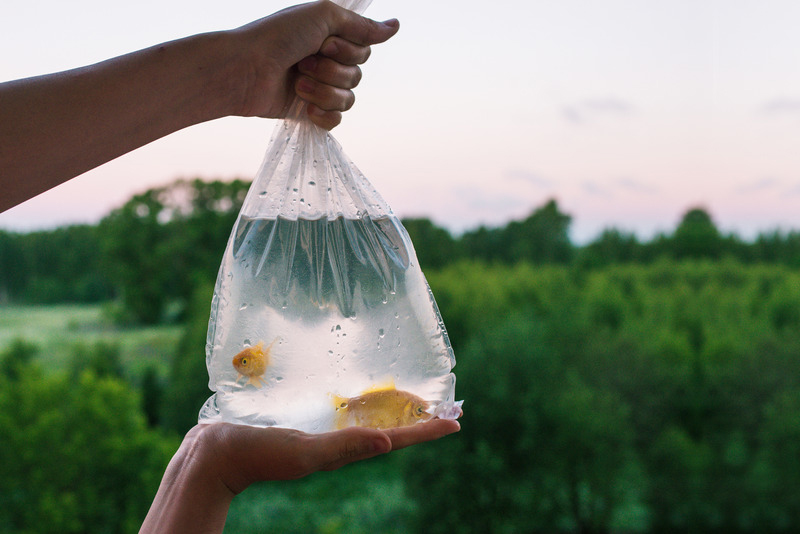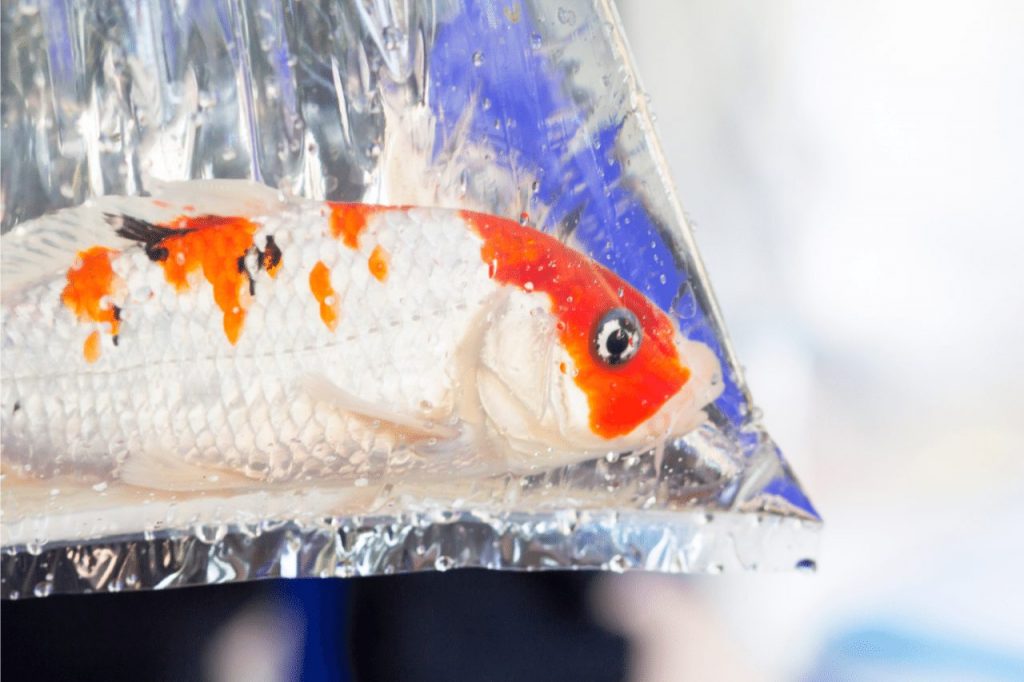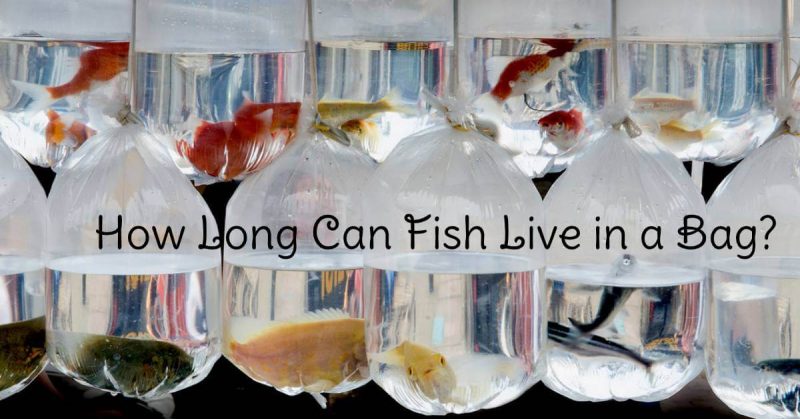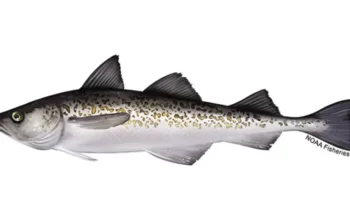If you’re new to fish farming, you might be surprised to see your pet fish in a plastic bag ready to go home. Every beginner starts their journey with their first bagged fish. It is necessary to know the answers to various questions about fish. But the first question is always: how long can fish live in a bag? It depends on the situation. Fish can easily survive 7 to 9 hours in a bag with enough water without any problems. Plus, your fish can live comfortably for 48 hours if the oxygen levels in the bag are high. So, as mentioned before, the survival of the fish depends on the oxygen in the bag. Let’s dig a little deeper, how long can fish stay in the bag and what’s the best way to move them to a permanent home?
Table of Contents
How Long Can Fish Survive Without Oxygen?
Technically, fish die in the absence of oxygen, but their survival also depends on the type of water. The reason for the death of the bagged fish is actually a lack of oxygen!
If the fish are in shallow water, their swimming circulates the water, providing oxygen from the surface. This shallowness helps the fish survive 2 days in the container.
Another factor is whether the fish is alone or at school. A fish can even survive for a week because it is the only fish that uses oxygen in the container.
The crowded environment sparks competition among the fish, depleting the gas and sometimes reducing their lifespans to a few hours.
Why Is Oxygen So Important?
Like us, fish need oxygen or oxygen for respiration, and their gills are able to absorb the oxygen in the water. Some fish, like bettas, also have an organ that allows them to breathe the air above the waterline, so they can survive longer in stagnant water.
Hypoxia can be a real problem in aquariums, which is why we use filtration systems and devices like air stones to maintain high oxygen levels in aquariums. When fish are kept in closed containers, they quickly use up all the oxygen in the water and the air and begin to suffocate.
Factors To Consider When Keeping Fish In Bags
Shipping fish in plastic bags is not a new method; it has been the standard for over 30 years. Farmers use these bags to transport fish to stores, and if you order fish online, they will arrive at your mailing address that way. The length of time you can keep the fish in the bag depends on a number of factors, including:
- The size of the bag.
- Whether the bag is filled with oxygen or air.
- The size and number of animals in the bag.
- Conditions during transport.
How Long Can Fish Live In A Bag?

The basic thing to know about fish is that they are sensitive but adapt. These little creatures can do wonders when it comes to survival.
When you first put the fish in the bag, the pet store will first warn you about the survival rate. Fish can live comfortably for 7 to 9 hours in a bag.
There is not enough oxygen in the bag to handle the fish for a long time. You must transfer the fish to the circulating tank immediately.
However, when the pet store added oxygen to the bag, things were different. Therefore, the fish can easily survive for 48 hours with few complaints.
That doesn’t mean you shouldn’t rush to get your tank ready faster. The fish must leave the tight space as quickly as possible and enter a slightly larger environment.
How Many Fish Can Live In A Bag?
You should put one fish in the bag at a time. Any more than one fish can cause serious problems.
The increased demand causes pH changes and even rapid depletion of oxygen, making it difficult for fish to survive.
How to Transfer New Fish from the Bag to the Aquarium
When you transfer new fish from the bag to your tank, don’t put them in right away.
Place the bag on the water and slowly start to match the temperature of the tank.
First, transfer about 20-25% of the tank water to the bag so the fish can acclimate to the tank water.
After a few minutes, add about half of it and see if your fish still looks comfortable even after the replacement.
You should let your fish swim freely in the tank only after you have allowed your fish to gradually get used to the new water.
The whole process takes about 20 minutes, not more.
What Happens If You Forget To Transfer The Fish From The Bag?
Fish are delicate creatures and you’ll never forget that. They do adjust over a period of time, but any time beyond their limits can have consequences.
These fish need to be removed from the bag after a period of time to survive. Otherwise, you will find either an unhealthy stressed fish or a dead fish.
This thing can’t be sugar-coated because this is when you forget to transfer your fish.
That’s what happens in the bag a few hours later: the oxygen levels start to deplete. When fish waste produces ammonia in the water, the pH fluctuates.
The water eventually becomes so toxic that your fish can no longer handle it. This all leads to stress at first, and fish death at the end.
How To Increase The Lifespan Of The Fish In The Bag?

There are a few things you can do to extend the life of your fish in such a small space. Here is their list.
- Oxygen
Pet stores usually put more oxygen in the bag; however, it doesn’t hurt to ask again before leaving.
You need to make sure it contains two-thirds of oxygen.
- Short journey
When you have a fish in the bag, it’s best to shorten your trip as soon as possible. Your fish can only handle a bag-like environment for a few hours, which is why short trips are advisable.
- Do not feed
The main cause of ammonia production is the waste produced by fish. When you transport fish in bags, you should avoid feeding it.
- Quality of the bag
This is the first thing you need to check. You will need a 3mm thick bag that will prevent damage.
You should avoid pillowcase bags as they have sharp corners and may trap fish. The fish trapped in the horns eventually suffocated to death.
Another important thing is that you have to stack 2 to 3 bags so that the bags stay airtight even to protect the fish from possible damage. Also, you should use a good quality rubber band to seal it.
- Water condition
The water should be clean and non-toxic. You need to make sure the temperature, dissolved oxygen, and carbon dioxide levels are suitable for the fish.
Ammonia content is proportional to temperature. An increase in one leads to an increase in the other.
High temperatures increase the metabolic activity of fish, which in turn increases ammonia levels.
You can use a heat or ice pack to keep the bag warm while traveling. But these bags need to be added to the container along with the fish bag, not the bag itself.
- Drug use
You might think that antibiotics can help you protect your fish, and to some extent, you’d be right.
But when travel is locked in a bag, medication can do more harm than good. Therefore, it is best to avoid any medication with bagged fish.
Last Few Words
How long a fish can live in a bag is not a particularly easy question to answer.
When traveling, there are multiple factors that affect how long they stay safe and healthy in the bag.
Know what these are so you can reasonably estimate how long your fish should be in the bag.
Also, take precautions such as adjusting its diet and handling when planning for transport. The life of the fish depends on it.




